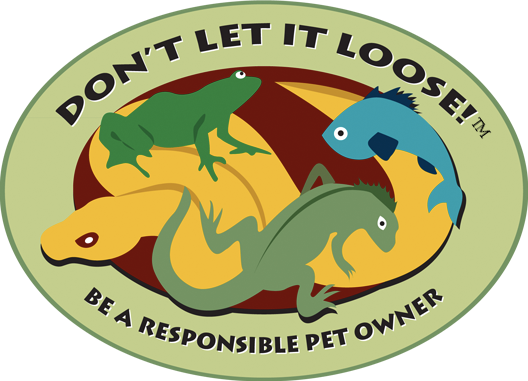Can pets really be invasive species?
Some pets when released into the wild can become invasive species. So, if the conditions are right, pets like goldfish, some reptiles, amphibians and invertebrates like snails or crayfish can become invasive species. If someone is dumping an aquarium, then everything in the aquarium goes. It’s not just the fish, but the snails, water plants, and anything else in the tank. All this stuff has the potential to become an invasive species.
What does it mean to be an invasive species?
There are legal and scientific definitions to describe invasive species, but the key ideas here are that non-native species (plants, animals or microscopic creatures) get introduced to a new area (or habitat), become established (aka happy and healthy), and cause harm to either the habitat, harm toother native creatures, or harm to human health.
How do invasive species harm habitat?
When an invasive species does things like burrowing into banks of a river and causing them to collapse, growing so thick that no other species can live there, or changing the water chemistry of a pond, then these things can change the habitat.
What does it mean for an invasive species to harm native species?
When an invasive species takes available food, prime habitat or literally eats anything it can get in its mouth, these vital changes can affect native species survival.
In cold climates, can a released pet actually become an invasive species?
The short answer is yes. There are definitely conditions that make it hard for tropical plants and animals to survive freezing temperatures and snow, but Don’t Let it Loose is about helping pet owners make responsible choices. Regardless of where you live, releasing a pet is not a humane or responsible choice.
How can I find out what species are considered invasive?
Many states have identified different species that are of concern and have restricted their sale, possession and sometimes transport. Check with your state wildlife or agriculture agency to find out what species are regulated and how they are being regulated. Chances are many of these species are on this list for their potential to harm.
